Private Pilot Book Exam 1 - Communication Procedures
1/56
There's no tags or description
Looks like no tags are added yet.
Name | Mastery | Learn | Test | Matching | Spaced |
|---|
No study sessions yet.
57 Terms
From whom should a departing VFR aircraft request radar traffic information during ground operations?
Ground control, on initial contact
If the control tower uses a light signal to direct a pilot to give way to other aircraft and continue circling, the light will be
steady red
With certain exceptions, all aircraft within 30 miles of a Class B primary airport from the surface upward to 10,000 feet MSL must be equipped with
ADS-B Out Equipment
The correct method of stating 10,500 feet MSL to ATC is
‘ONE ZERO THOUSAND, FIVE HUNDRED.’
When operating under VFR below 18,000 feet MSL, unless otherwise authorized, what transponder code should be selected?
1200
A flashing white light signal from the control tower to a taxiing aircraft is an indication to
return to the starting point on the airport
When making routine transponder code changes, pilots should avoid inadvertent selection of which codes?
7500, 7600, 7700
(Refer to Figure 25, area 3.) If Dallas Executive (RBD) tower is not in operation, which frequency should be used as a Common Traffic Advisory Frequency (CTAF) to monitor airport traffic?
127.25 MHz
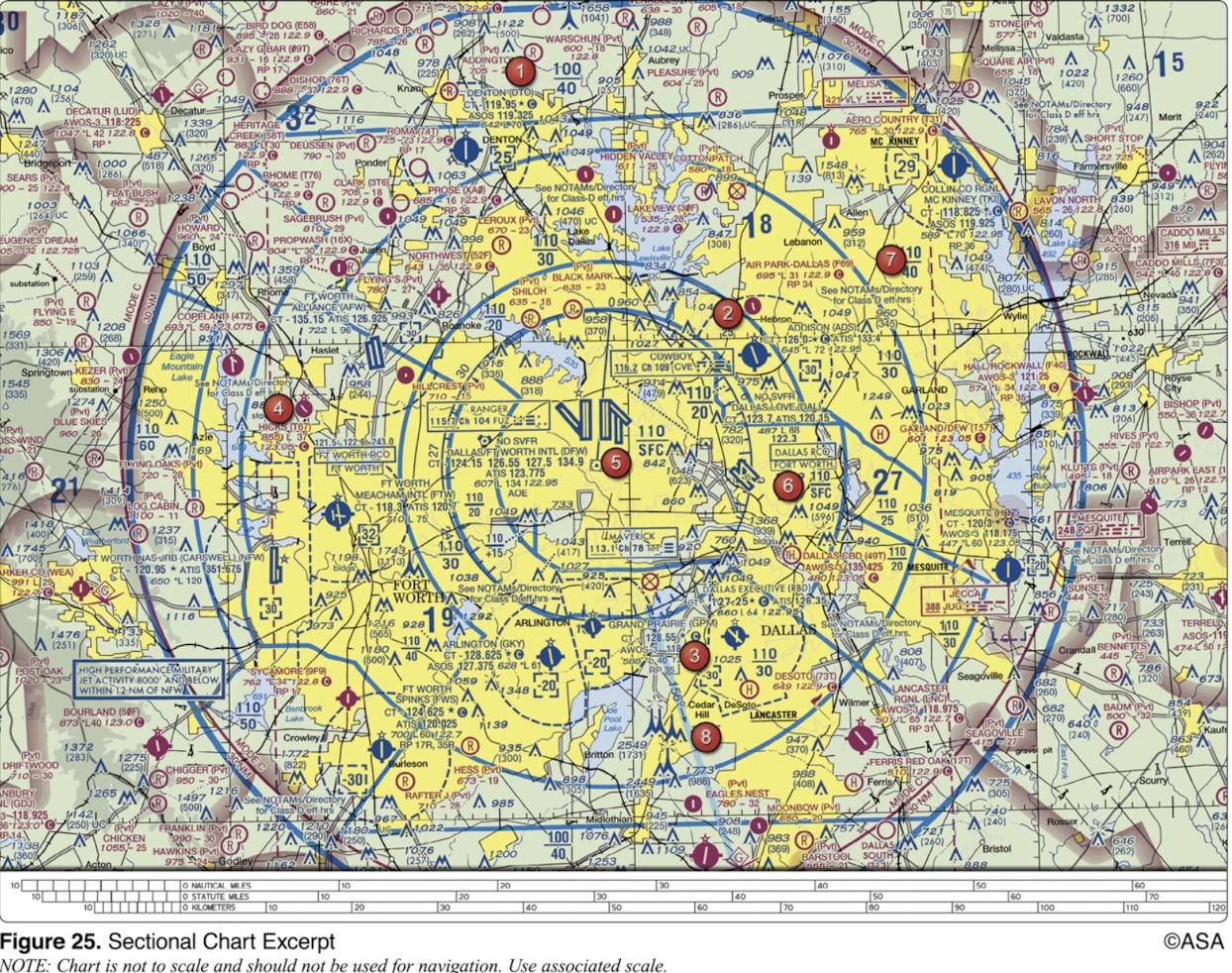
(Refer to Figure 26, area 2.) What is the recommended communication procedure when inbound to land at Cooperstown Airport?
Broadcast intentions when 10 miles out on the CTAF/MULTICOM frequency, 122.9 MHz
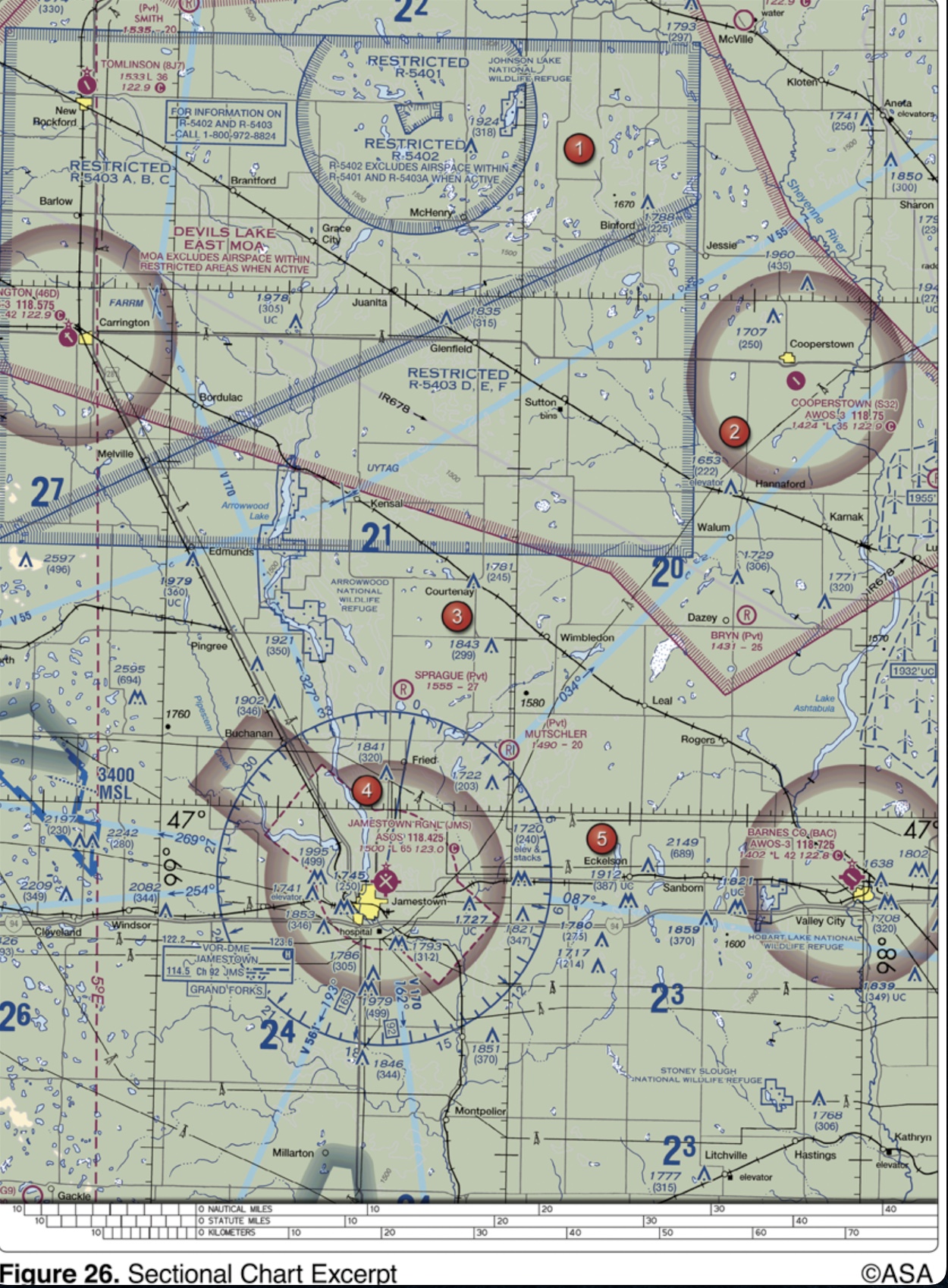
What type of ADS-B Out equipment is required for aircraft operating below 18,000 feet MSL when flying in class C airspace?
1090-ES or Universal Access Transceiver
Absence of the sky condition and visibility on an ATIS broadcast indicates that
the ceiling is at least 5000 feet and visibility is 5 miles or more
(Refer to Figure 21, area 2.) The CTAF/MULTICOM frequency for Garrison Airport is
122.9 MHz
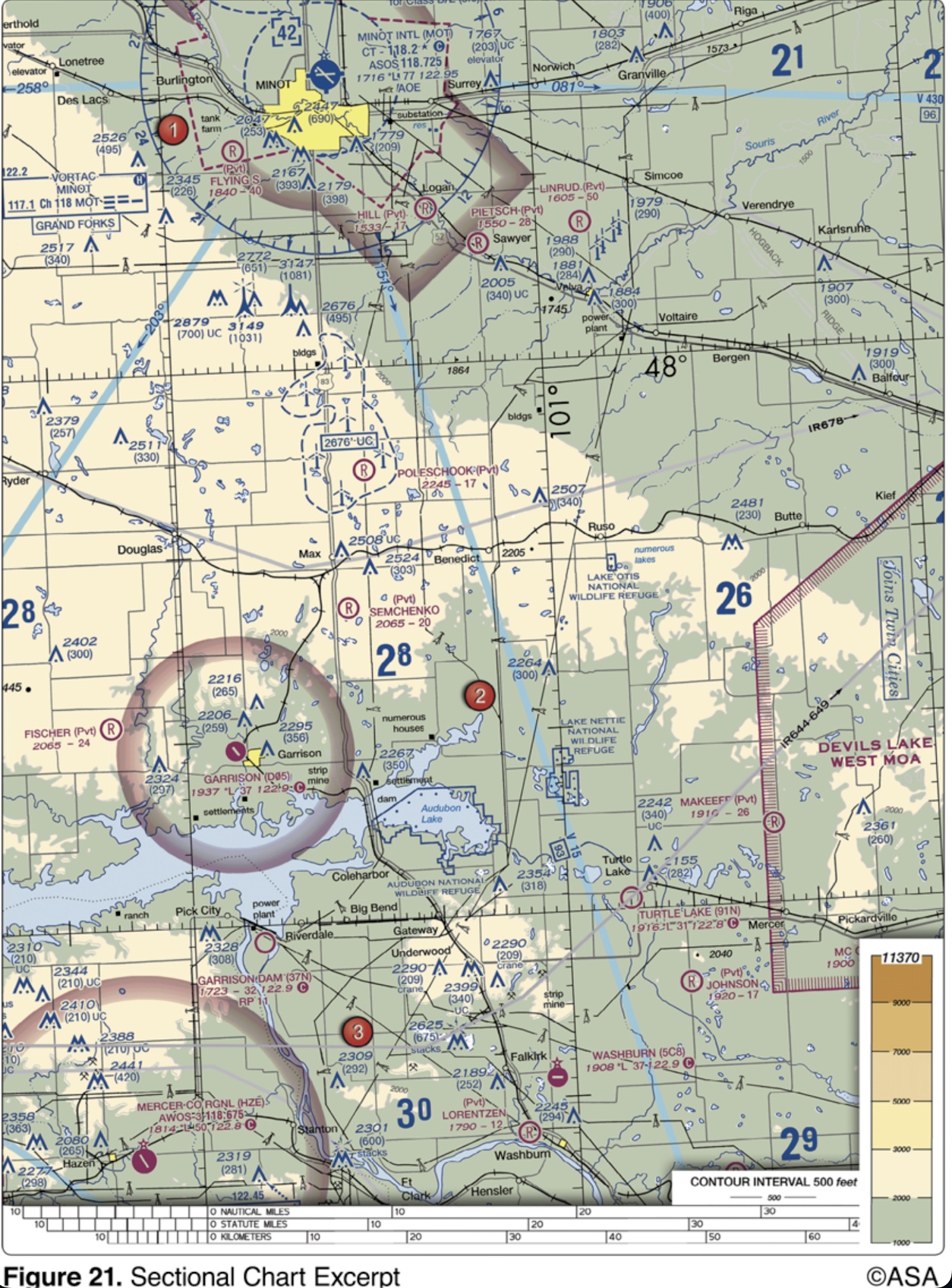
TRSA Service in the terminal radar program provides
sequencing and separation for participating VFR aircraft
If Air Traffic Control advises that radar service is terminated when the pilot is departing Class C airspace, the transponder should be set to code
1200
An ATC radar facility issues the following advisory to a pilot flying on a heading of 090°:
'TRAFFIC THREE O'CLOCK, 2 MILES, WESTBOUND...'
Where should the pilot look for this traffic?
South
When must the battery in an emergency locator transmitter (ELT) be replaced (or recharged if the battery is rechargeable)?
After one-half the battery’s useful life
Why should you file a VFR flight plan with the FAA?
To provide search and rescue in the event of an emergency
(Refer to Figure 22, area 2; and Figure 31.) At Coeur D'Alene, which frequency should be used as a Common Traffic Advisory Frequency (CTAF) to self-announce position and intentions?
122.8 MHz
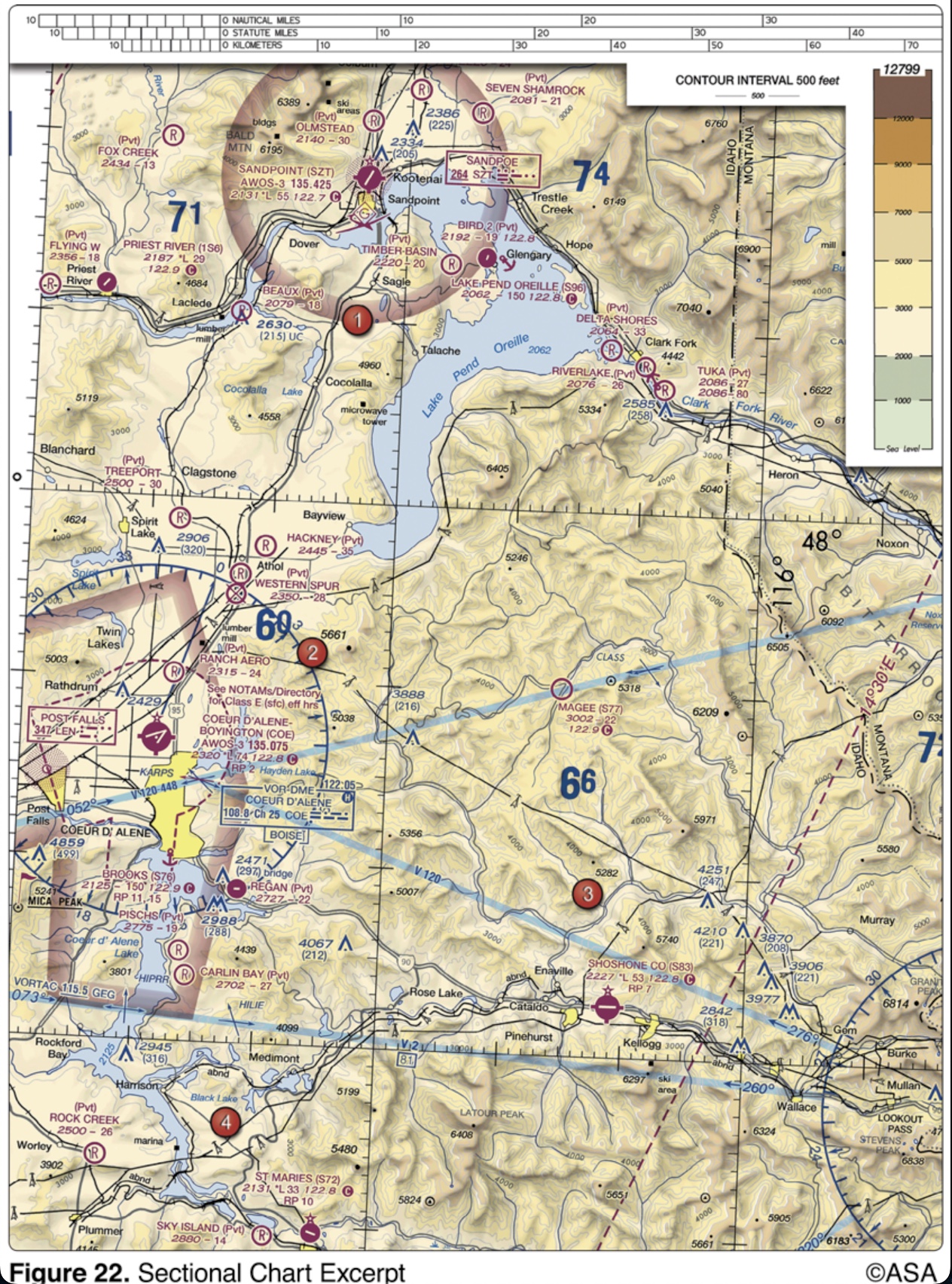
An alternating red and green light signal directed from the control tower to an aircraft in flight is a signal to
exercise extreme caution
If the aircraft's radio fails, what is the recommended procedure when landing at a controlled airport?
Observe the traffic flow, enter the pattern, and look for a light signal from the tower
ADS-B Out equipment broadcasts the aircraft's
three-dimensional position and velocity
(Refer to Figure 26, area 4.) The CTAF/UNICOM frequency at Jamestown Airport is
123.0 MHz
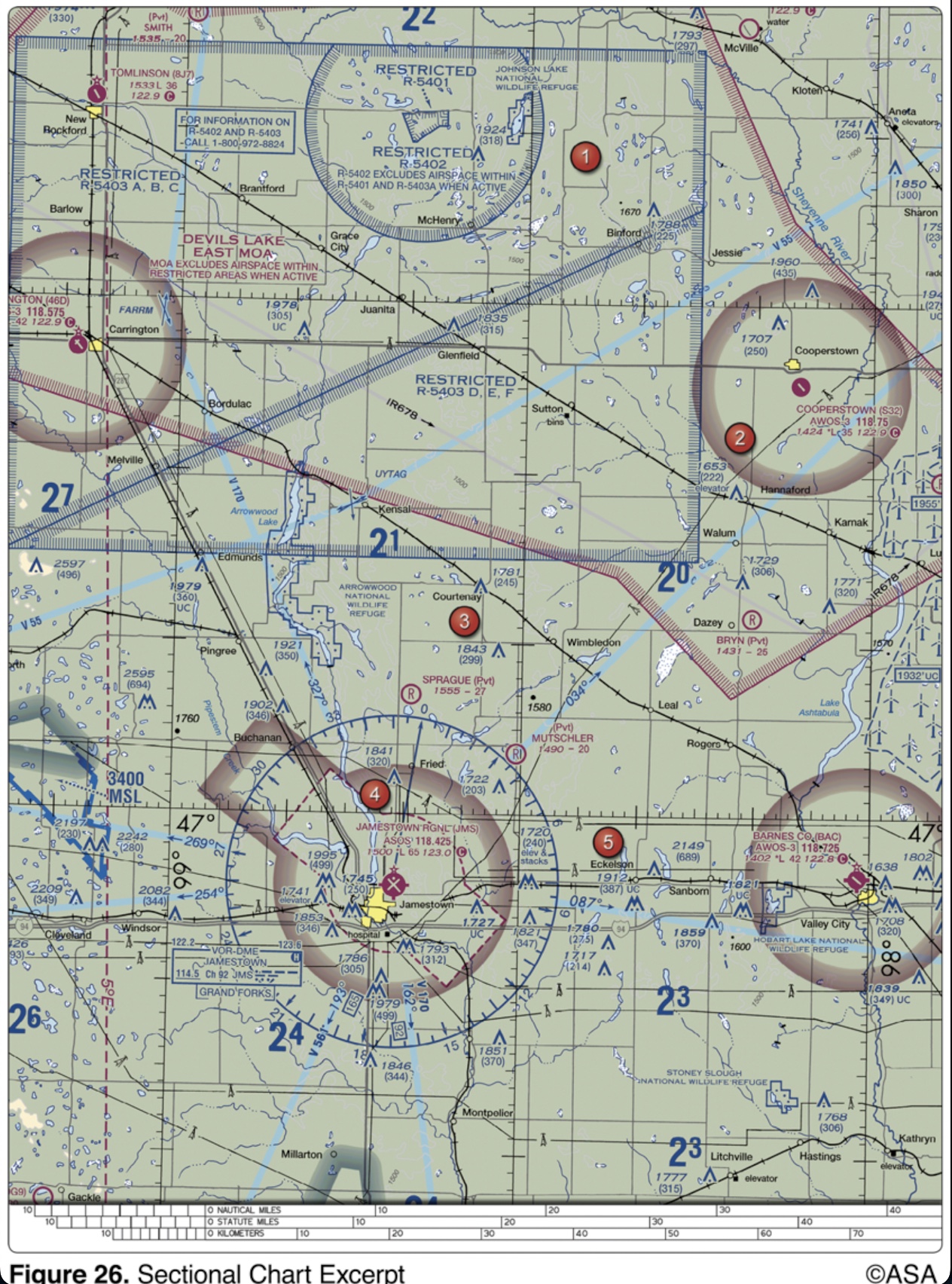
When may an emergency locator transmitter (ELT) be tested?
During the first 5 minutes after the hour
For operations of an aircraft in class C airspace with inoperative ADS-B Out equipment, a request must be made to the ATC facility having jurisdiction over the airspace
at any time
When should pilots state their position on the airport when calling the tower for takeoff?
When departing from a runway intersection
Basic radar service in the terminal radar program is best described as
saftey alerts, traffic advisories and limited vectoring to VFR aircraft
An ATC radar facility issues the following advisory to a pilot during a local flight:
'TRAFFIC TWO O'CLOCK, 5 MILES, NORTHBOUND...'
Where should the pilot look for this traffic?
between directly ahead and 90 degrees to the right
(Refer to Figure 25, area 2.) The control tower frequency for Addison Airport is
126.0 MHz
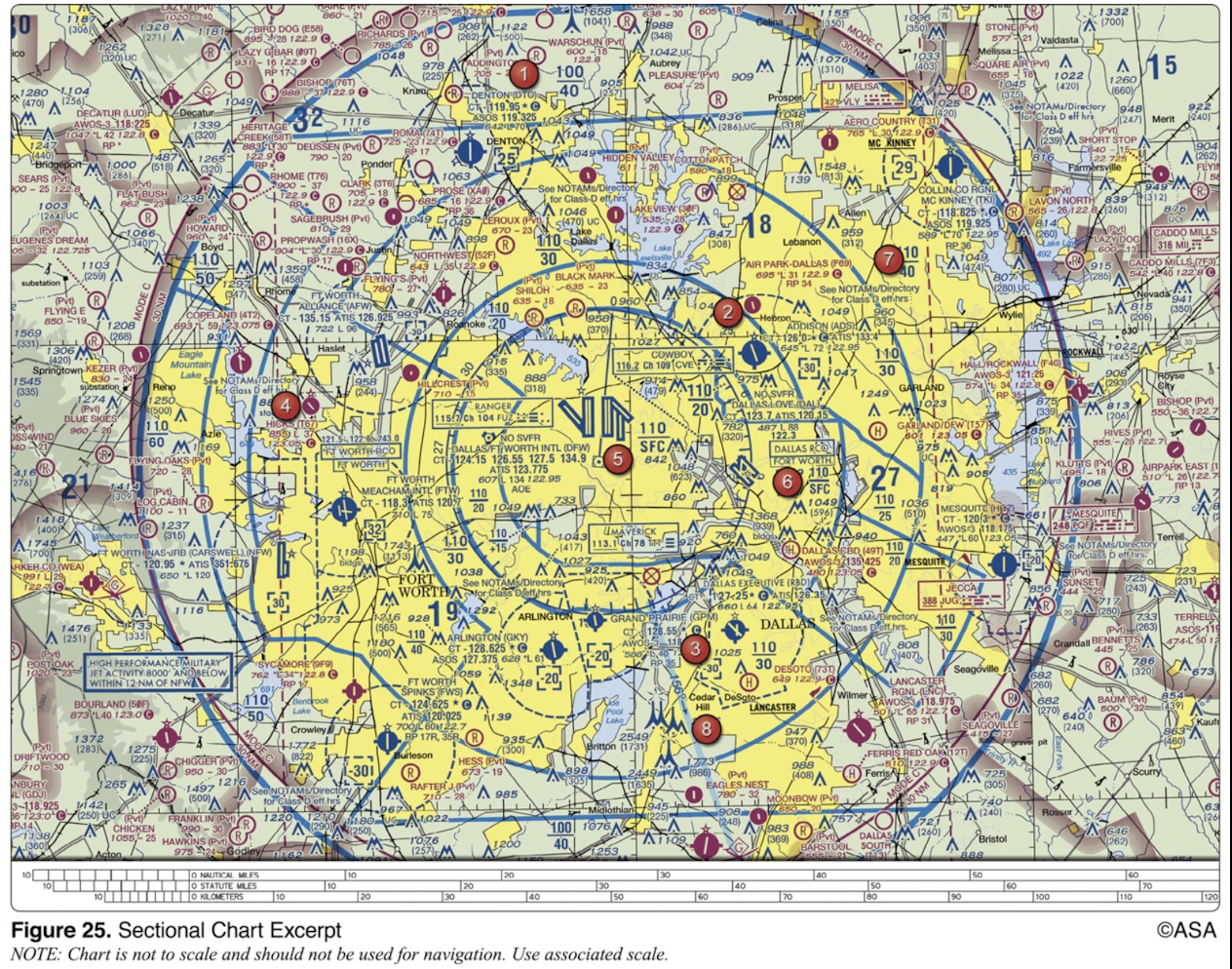
An operable 4096-code transponder and Mode C encoding altimeter are required in
Class B airspace and within 30 miles of the Class B primary airport
Which procedure is recommended to ensure that the emergency locator transmitter (ELT) has not been activated?
Monitor 121.5 before engine shutdown
Which light signal from the control tower clears a pilot to taxi?
flashing green
When flying HAWK N666CB, the proper phraseology for initial contact with McAlester Flight Service is
‘MC ALESTER RADIO, HAWK SIX SIX SIX CHARLIE BRAVO, RECIEVING ARDMORE VORTAC, OVER.’
An ATC radar facility issues the following advisory to a pilot flying north in a calm wind:
'TRAFFIC NINE O'CLOCK, 2 MILES, SOUTHBOUND...'
Where should the pilot look for this traffic?
West
An ATC radar facility issues the following advisory to a pilot flying on a heading of 360°:
'TRAFFIC TEN O'CLOCK, 2 MILES, SOUTHBOUND...'
Where should the pilot look for this traffic?
Northwest
(Refer to Figure 26, area 5.) What is the CTAF/UNICOM frequency at Barnes County Airport?
122.8 MHz
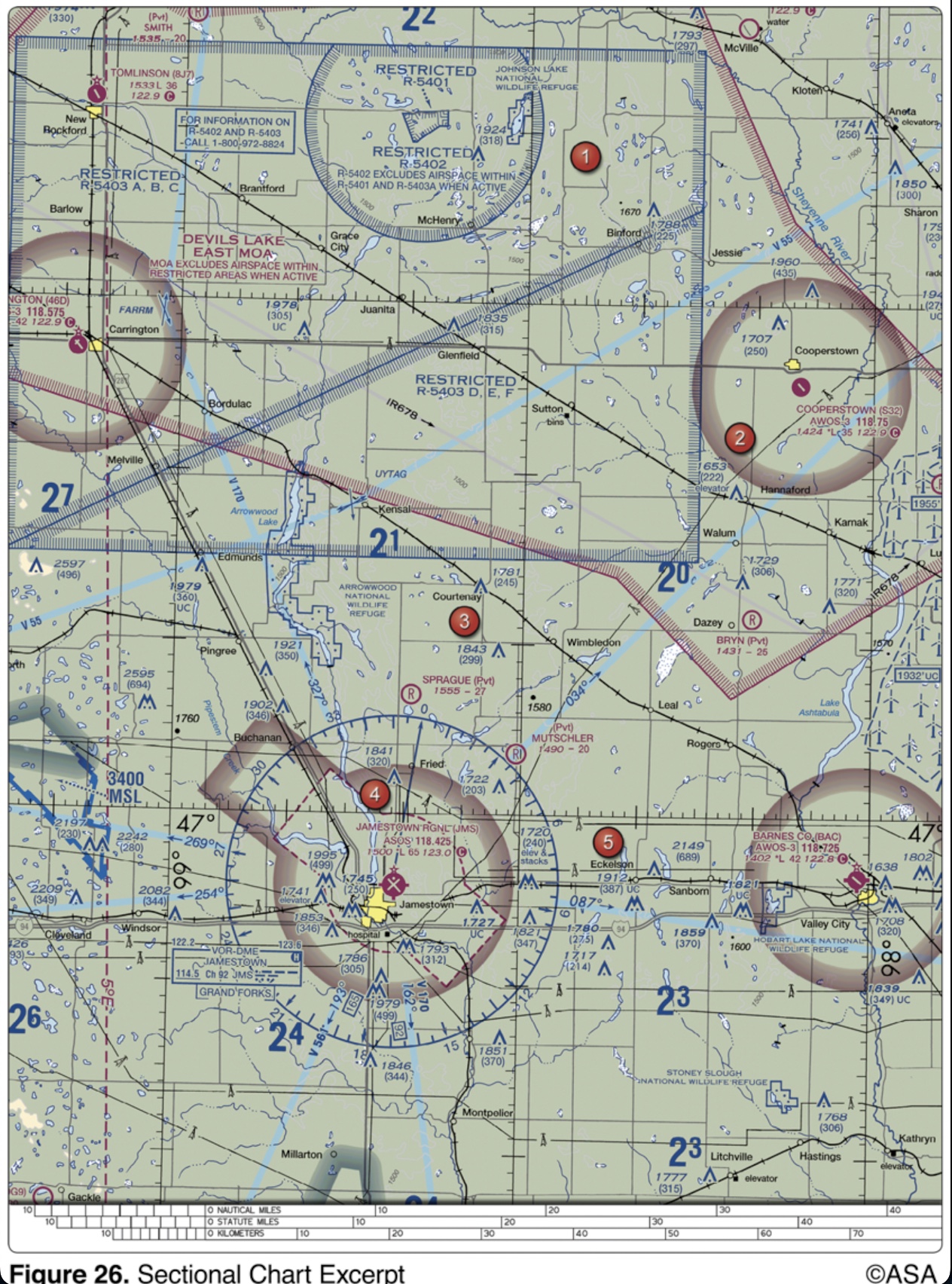
As standard operating practice, all inbound traffic to an airport without a control tower should continuously monitor the appropriate facility from a distance of
10 miles
When operating the transponder on the VFR code (1200), what is the minimum mode the transponder must be in?
Mode A
(Refer to Figure 22, area 2; and Figure 31.) What is the correct UNICOM frequency to be used at Coeur D'Alene to request fuel?
122.8 Mhz
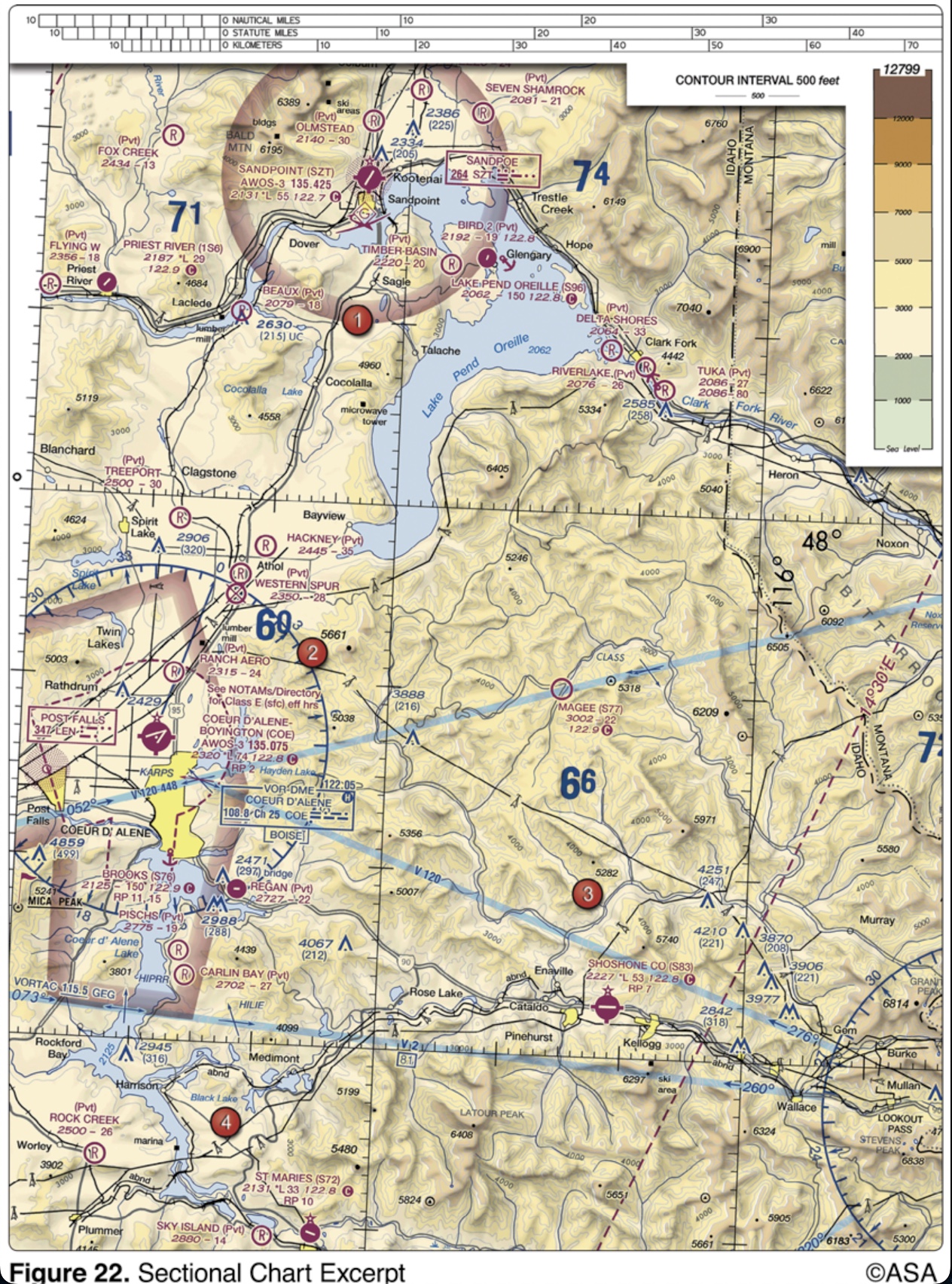
A steady green light signal directed from the control tower to an aircraft in flight is a signal that the pilot
is cleared to land
When making routine transponder code changes, pilots should avoid inadvertent selection of which code?
7500
(Refer to Figure 22, area 2; and Figure 31). At Coeur D'Alene, which frequency should be used as a Common Traffic Advisory Frequency (CTAF) to monitor airport traffic?
122.8 MHz
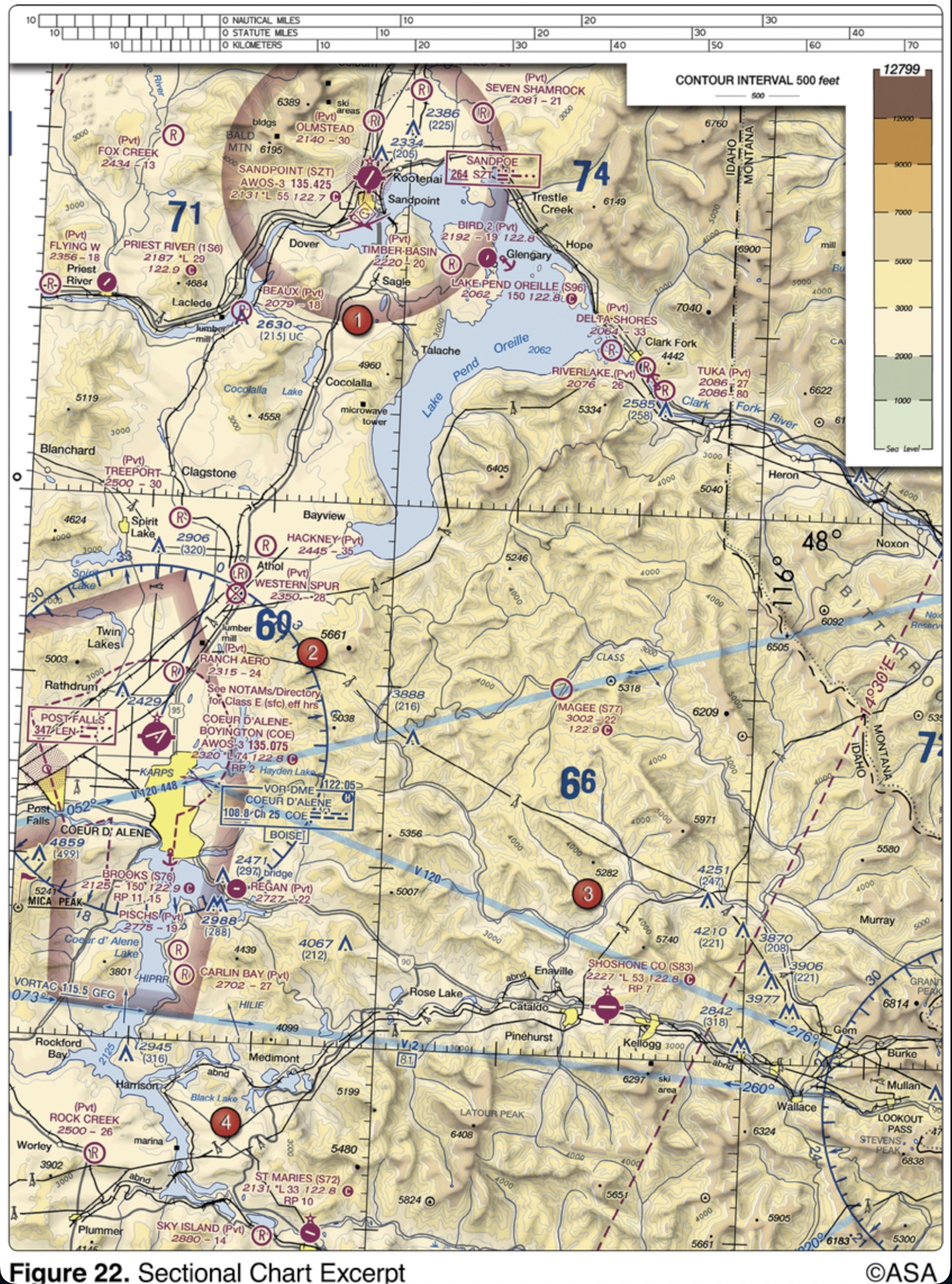
Each person operating an aircraft equipped with ADS-B Out must operate this equipment
in transit mode at all times
Unless otherwise authorized, which situation requires ADS-B?
Overflying Class C airspace below 10,000 feet MSL
The correct method of stating 4,500 feet MSL to ATC is
‘FOUR THOUSAND FIVE HUNDRED.’
Select the UNICOM frequencies normally assigned to stations at landing areas used exclusively as heliports.
123.05 and 123.075 MHz
(Refer to Figure 51.) What information should be entered for Item 15, level, on the flight plan form?
VFR cruising altitude
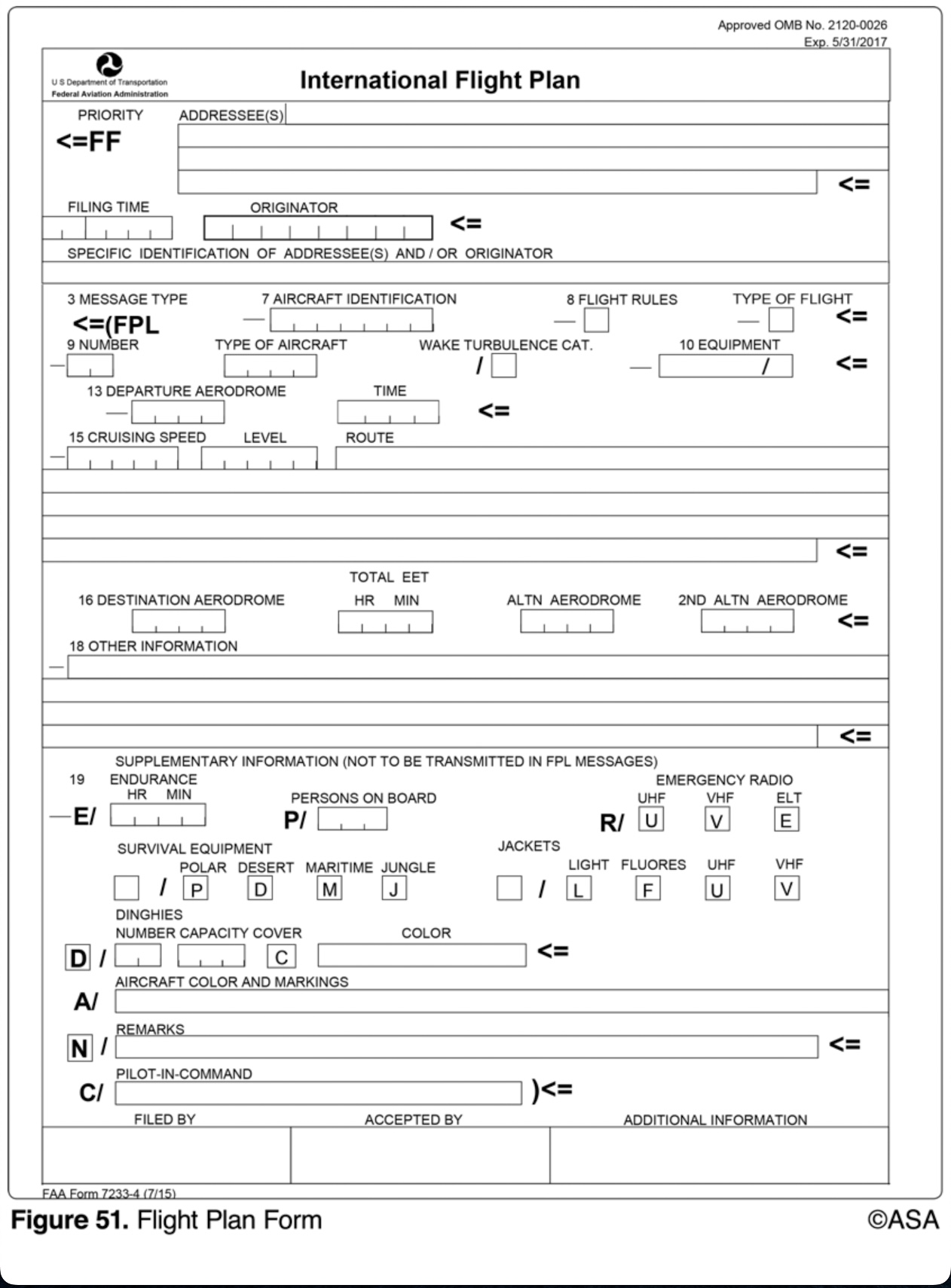
When activated, an emergency locator transmitter (ELT) transmits on
406 MHz
When are non-rechargeable batteries of an emergency locator transmitter (ELT) required to be replaced?
When 50 percent of their useful life expires
When an air traffic controller issues radar traffic information in relation to the 12-hour clock, the reference the controller uses is the aircraft`s
ground track
After landing at a tower-controlled airport, when should the pilot contact ground control?
When advised by the tower to do so
When must batteries in an emergency locator transmitter (ELT) be replaced or recharged, if re-chargeable?
When the ELT has been in use for more than 1 cumulative hour
Unless otherwise authorized, if flying a transponder equipped aircraft, a pilot should squawk which VFR code?
1200
An operable 4096-code transponder with an encoding altimeter is required in which airspace?
Class A, Class B (and within 30 miles of the Class B primary airport), and Class C
If instructed by ground control to taxi to Runway 9, the pilot may proceed
to the next intersecting runway where further clearance is required
(Refer to Figure 20, area 3.) What is the recommended communications procedure for a landing at Currituck County Airport?
Transmit intentions on 122.9 MHz when 10 miles out and give position reports in the traffic pattern
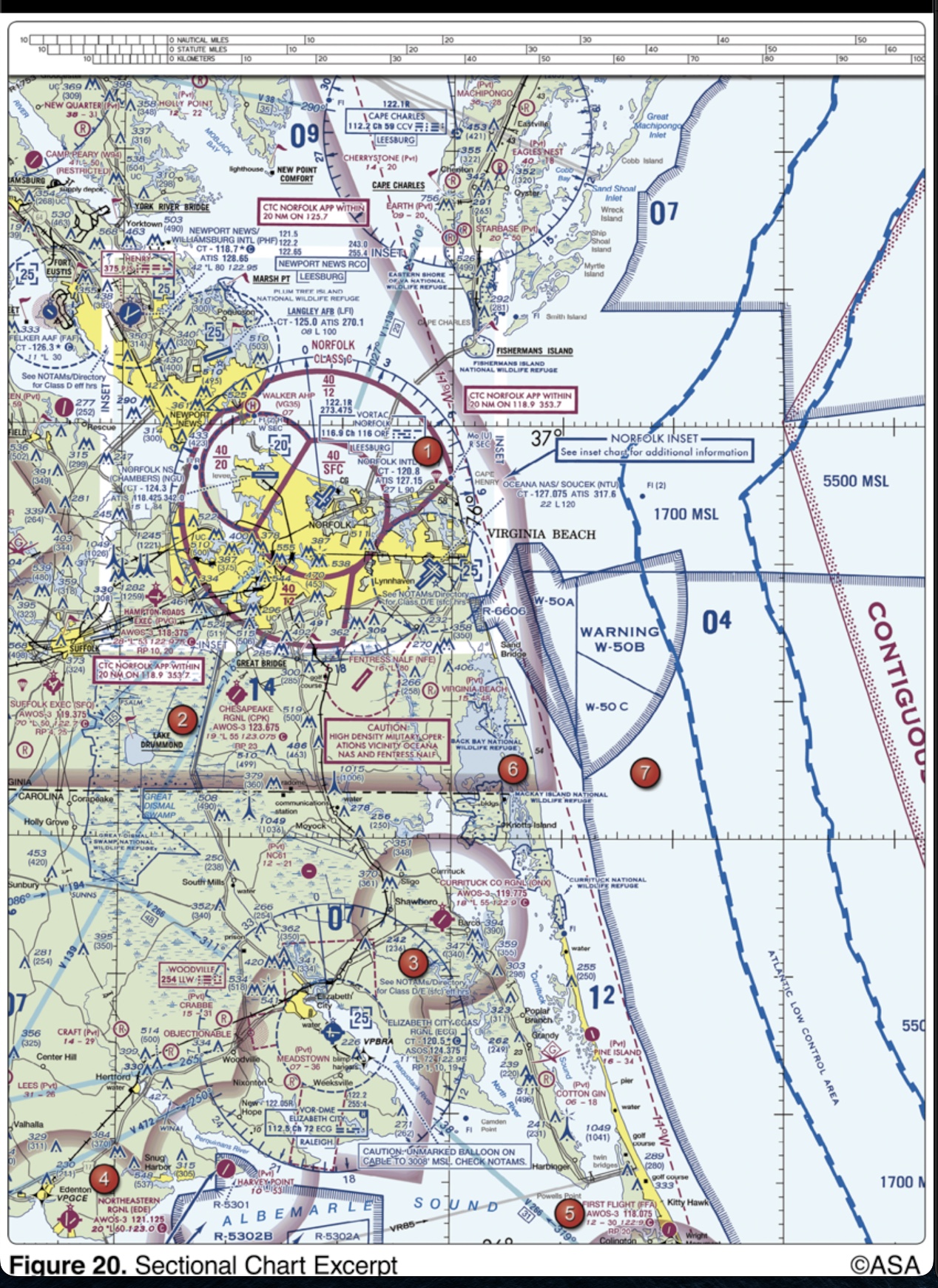
Automatic Terminal Information Service (ATIS) is the continuous broadcast of recorded information concerning
non control information in selected high-activity terminal areas
While on final approach for landing, an alternating green and red light followed by a flashing red light is received from the control tower. Under these circumstances, the pilot should
exercise extreme caution and abandon the approach, realizing the airport is unsafe for landing